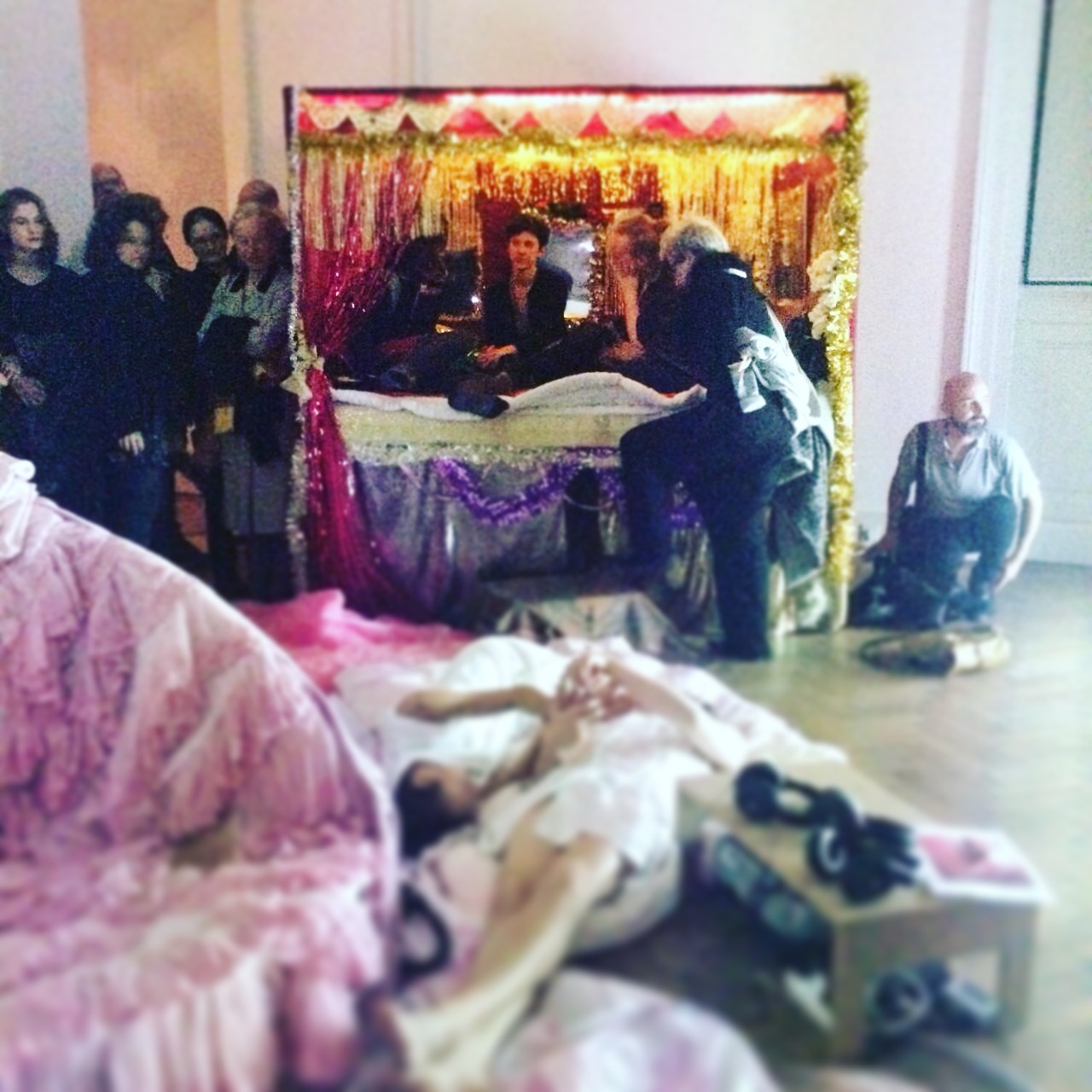Wedding Hedjleh
Wedding Hedjleh
Wedding Hedjleh
Wedding Hedjleh
Wedding Hedjleh
Wedding Hedjleh
WEDDING HEDJLEH
The exhibition and performance project “With Eyes Aghast: Transmannerist Reactions” focuses on contemporary queer mannerisms in a critically playful way. The curatorial team’s invitation is aimed at an imaginatively grotesque distortion of the xhibit space and other parts of the Schillerplatz: surprising decorative fine art and architecture forms meet with burlesque and drag formats. Historical mannerism, which marks a rupture in every expression, finds a contemporary mirror in this transdisciplinary project, which pursues what Gustav René Hocke described as “the alchemy of language” in his work Die Welt als Labyrinth (1957, The World as a Labyrinth). Epigrammatically, as it were, the artists’ works counter socioeconomic constraints visible in emerging autocratic forms of power with a queer and decolonizing thrust.
The title of the project refers to the mannerist Sacro Bosco in Bomarzo where a sphinx welcomes the visitors entering the site with the following words: “Whoever does not wander through this place with raised brows and lips pressed tightly together would not even admire the Seven Wonders of the World.” (Horst Bredekamp, Vicino Orsini und der Heilige Wald von Bomarzo, 1985) The world of wonders that manifests itself in an overall mannerist concept challenges its vis-à-vis to creatively and actively intervene in the circumstances given and engage in their highest form, artistic expression and understanding.
The garden as a site of the manifestation of and the debate on artificiality, of the disintegration of existing systems, and the reassessment of given hierarchies will be defined and discussed in a contemporary vein: (trans)mannerism may be understood as absolute empowerment on the basis of breaking away from the prevailing conditions and the creation of a physique of one’s own. Flamboyant: being a cyborg and rooted in “Creole” is what the manifesto amounts to.
Text: Ruby Sircar
After the wedding ceremony, the bride & the groom go to a gaudy room which has been prepared for them and spend the night there. The room is called “Hedjleh”. It’s in Hedjleh that they have the first opportunity to get close to each other, the first romantic moments. Some couples stay in Hedjleh for a few days. During these days they only leave Hedjleh when it’s necessary. Meanwhile, the women of their family stay around to find out how “it” was, and bring the news to the whole family. After that, the bride stays in Hedjleh and the women come to visit her.






